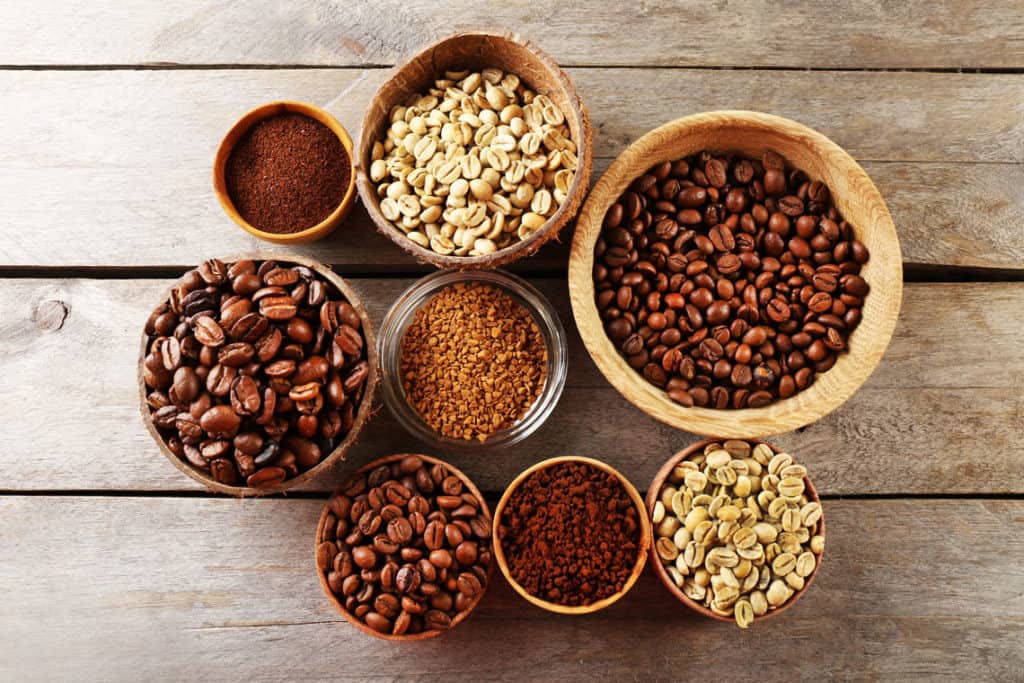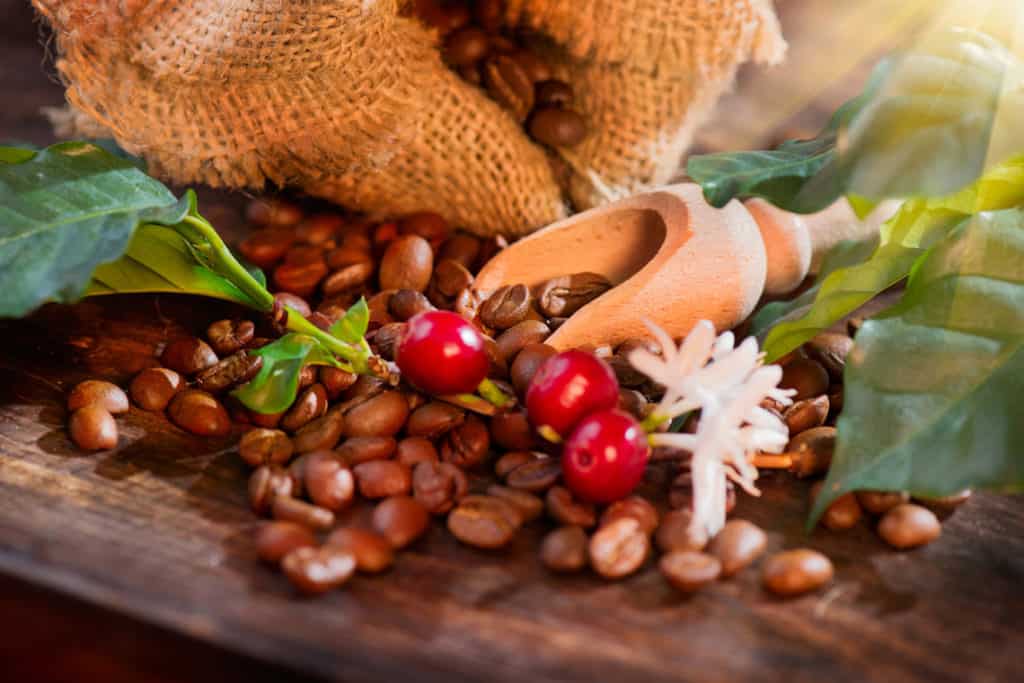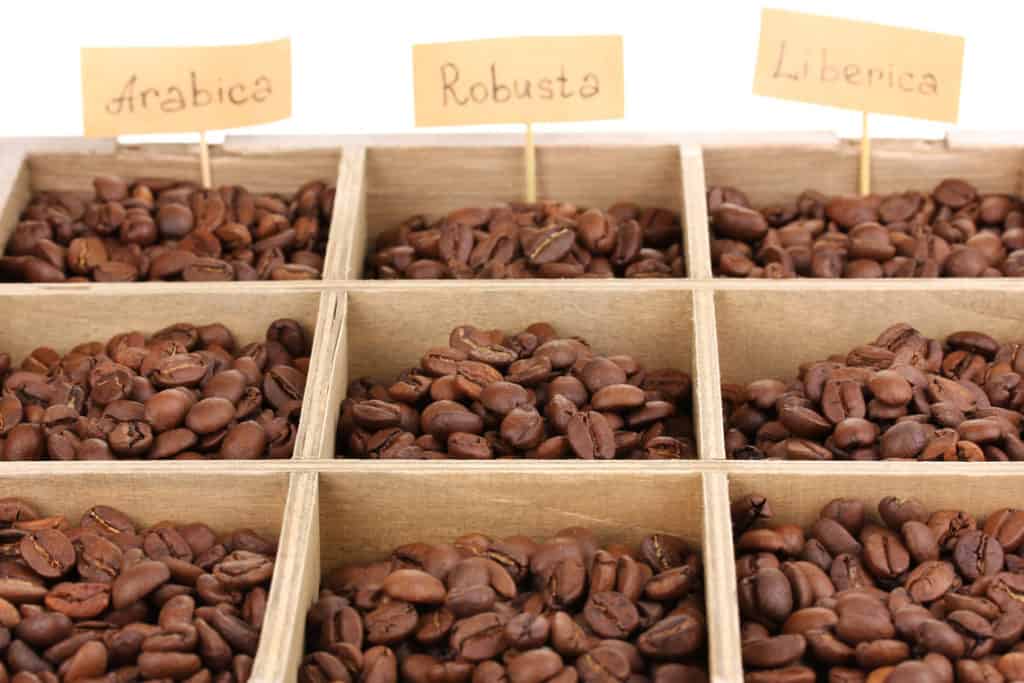You might be curious to know where your favorite coffee beans come from and what makes them unique. Did you know that just five countries are responsible for a whopping 75% of the world’s coffee production? That’s right – these coffee powerhouses leave an indelible mark on our daily caffeine fix.
In this article, we will take you on a journey around the world to discover the biggest coffee producers and their best coffee regions. You will learn about the types of coffee beans, the main regions where they are grown, and the global demand for coffee.
Top 10 Coffee-Producing Countries
According to the International Coffee Organization, a total of 169.6 million 60-kilogram bags of coffee were produced worldwide in 2020. The top 10 biggest coffee-producing nations held 87% of the commodity’s market share. Here is a list of the top 10 coffee-producing countries in the world, along with some brief information on their production statistics:
| Rank | Country | Production in 2020 (Million 60-kg Bags) | Total Market Share | Types of Coffee Beans |
|---|---|---|---|---|
| 1 | Brazil | 63.4 | 37.4% | Arabica (69%), Robusta (31%) |
| 2 | Vietnam | 29.0 | 17.1% | Robusta (95%), Arabica (5%) |
| 3 | Colombia | 14.3 | 8.4% | Arabica (100%) |
| 4 | Indonesia | 12.0 | 7.1% | Arabica (25%), Robusta (75%) |
| 5 | Ethiopia | 7.3 | 4.3% | Arabica (100%) |
| 6 | Honduras | 6.1 | 3.6% | Arabica (100%) |
| 7 | India | 5.7 | 3.4% | Arabica (25%), Robusta (75%) |
| 8 | Uganda | 5.6 | 3.3% | Arabica (20%), Robusta (80%) |
| 9 | Mexico | 4.0 | 2.4% | Arabica (100%) |
| 10 | Peru | 3.8 | 2.2% | Arabica (100%) |

Best Coffee Regions in the World
What makes a coffee region special? There are many factors that affect the quality and flavor of coffee beans, such as the climate, soil, altitude, processing methods, and cultural traditions of the region where they are grown. Some regions have developed a reputation for producing distinctive and high-quality coffee beans that are sought after by coffee connoisseurs around the world. Here are some of the most famous and best coffee regions in the world:
Brazil’s Minas Gerais, São Paulo, and Parana
Brazil is the world’s largest coffee producer and exporter, producing around one-third of the world’s coffee supply². Brazil’s coffee regions are mainly located in the southeastern states of Minas Gerais, São Paulo, and Parana, where the climate is ideal for growing both arabica and robusta beans. Brazil’s coffee beans are known for their low acidity, medium body, and sweet and nutty flavors². Some of the most popular varieties of Brazilian coffee are Santos, Bourbon Santos, Cerrado Mineiro, and Mogiana.
Vietnam’s Central Highlands
Vietnam is the second-largest coffee producer in the world and the largest producer of robusta beans³. Vietnam’s coffee regions are mainly located in the Central Highlands, where the climate is warm and humid with abundant rainfall³. Vietnam’s robusta beans are mostly used for instant coffee and espresso blends because of their high caffeine content and bitter taste³. However, Vietnam also produces some arabica beans, especially in the Lam Dong province, where the altitude is higher and the climate is cooler³. Some of the most popular varieties of Vietnamese coffee are Buon Ma Thuot, Dalat, and Moka.
Colombia’s Antioquia, Huila, and Cauca
Colombia is the third-largest coffee producer in the world and the largest producer of arabica beans. Colombia’s coffee regions are mainly located in the Andean mountains, where the climate is mild and the soil is rich and volcanic. Colombia’s arabica beans are known for their smooth and balanced flavor, with fruity and floral notes. Some of the most popular varieties of Colombian coffee are Supremo, Excelso, Medellin, and Narino.
Indonesia’s Sumatra, Java, and Sulawesi
Indonesia is the fourth-largest coffee producer in the world and the second-largest producer of robusta beans. Indonesia’s coffee regions are mainly located in the islands of Sumatra, Java, and Sulawesi, where the climate is tropical and the soil is fertile and volcanic. Indonesia’s coffee beans are known for their bold and earthy flavor, with low acidity and high body. Some of the most popular varieties of Indonesian coffee are Mandheling, Lintong, Toraja, and Java.
Ethiopia’s Sidamo, Yirgacheffe, and Harrar
Ethiopia is the fifth-largest coffee producer in the world and the largest producer of arabica beans in Africa. Ethiopia is also considered to be the birthplace of coffee, as legend has it that a goat herder named Kaldi discovered the stimulating effects of coffee berries in the 9th century. Ethiopia’s coffee regions are mainly located in the southern and eastern parts of the country, where the climate is moderate and the soil is diverse. Ethiopia’s coffee beans are known for their complex and aromatic flavor, with floral, fruity, and spicy notes. Some of the most popular varieties of Ethiopian coffee are Sidamo, Yirgacheffe, Harrar, and Limu.
Honduras’ Santa Barbara, Copan, and El Paraiso
Honduras is the sixth-largest coffee producer in the world and the third-largest producer of arabica beans in Central America. Honduras’ coffee regions are mainly located in the western and southern parts of the country, where the climate is mild and the soil is fertile and volcanic. Honduras’ coffee beans are known for their bright and fruity flavor, with citrus and floral notes. Some of the most popular varieties of Honduran coffee are Pacas, Catuai, and Lempira.
India’s Karnataka, Kerala, and Tamil Nadu
India is the seventh-largest coffee producer in the world and the fifth-largest producer of robusta beans. India’s coffee regions are mainly located in the southern states of Karnataka, Kerala, and Tamil Nadu, where the climate is tropical and the soil is rich and loamy. India’s coffee beans are known for their spicy and earthy flavor, with low acidity and high body. Some of the most popular varieties of Indian coffee are Monsooned Malabar, Mysore Nuggets, and Kaapi Royale.
Uganda’s Mount Elgon, Rwenzori, and West Nile
Uganda is the eighth-largest coffee producer in the world and the second-largest producer of robusta beans in Africa. Uganda’s coffee regions are mainly located in the eastern, western, and northern parts of the country, where the climate is warm and humid with abundant rainfall. Uganda’s coffee beans are known for their strong and bitter flavor, with nutty and chocolatey notes. Some of the most popular varieties of Ugandan coffee are Bugisu, Drugar, and Sipi Falls.
Mexico’s Chiapas, Oaxaca, and Veracruz
Mexico is the ninth-largest coffee producer in the world and the largest producer of organic coffee. Mexico’s coffee regions are mainly located in the southern states of Chiapas, Oaxaca, and Veracruz, where the climate is subtropical and the soil is volcanic and clayey. Mexico’s coffee beans are known for their mild and balanced flavor, with nutty and caramel notes. Some of the most popular varieties of Mexican coffee are Altura, Pluma Hidalgo, and Coatepec.
Peru’s Chanchamayo, Cusco, and San Martin
Peru is the tenth-largest coffee producer in the world and the second-largest producer of organic coffee. Peru’s coffee regions are mainly located in the central and northern parts of the country, where the climate is temperate and the soil is sandy and acidic. Peru’s coffee beans are known for their smooth and sweet flavor, with fruity and floral notes. Some of the most popular varieties of Peruvian coffee are Typica, Caturra, and Bourbon.
Conclusion
As you can see, coffee is a diverse and rich product that reflects the culture and geography of its origin. Whether you prefer a smooth and balanced Colombian brew or a bold and earthy Indonesian cup, there is a coffee region for everyone. Why not try different types of coffee beans from different regions and discover your favorite? Or share your thoughts on what makes a coffee region special in the comments below.
Last Updated on June 18, 2023 by Cristina Vélez




